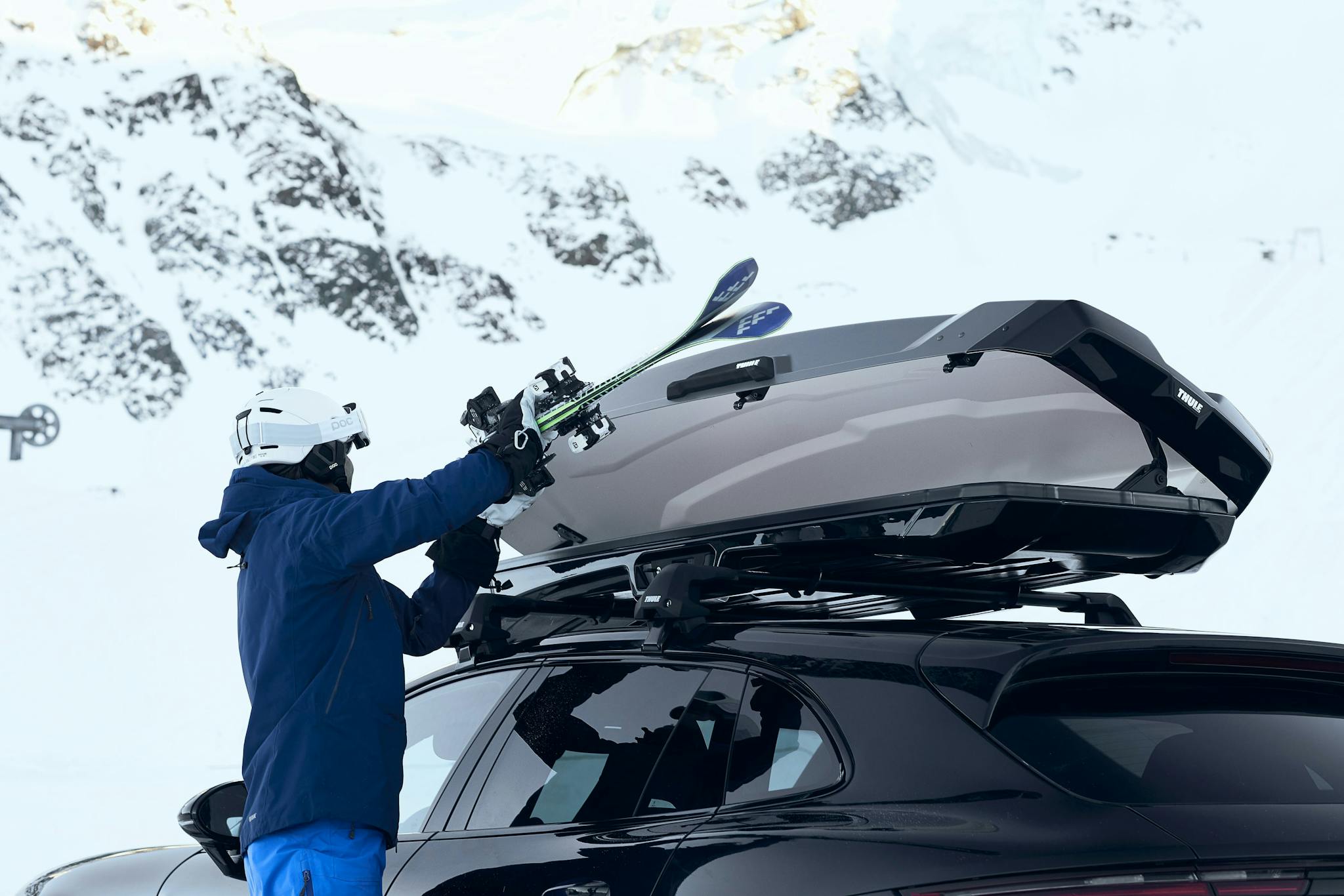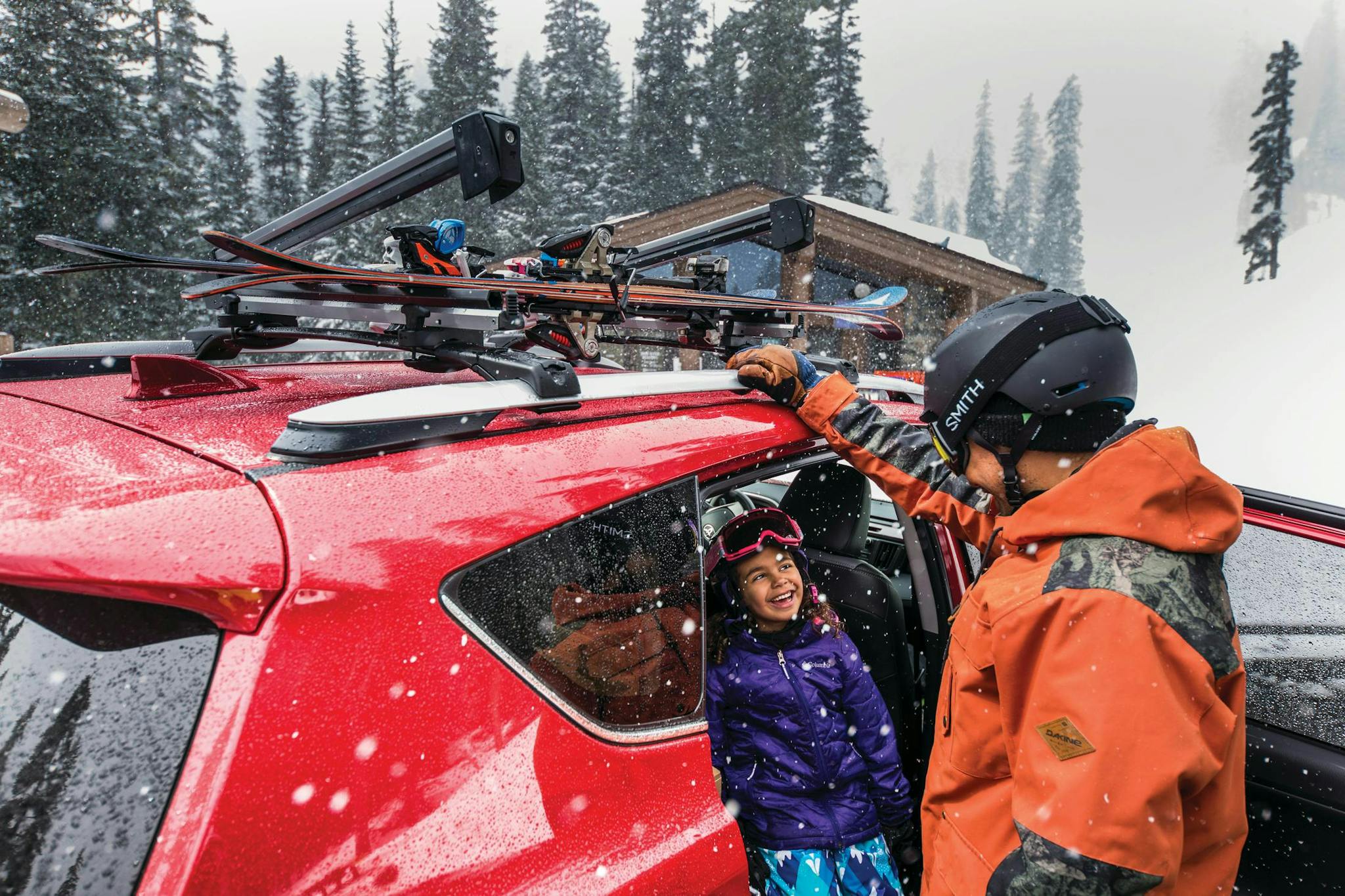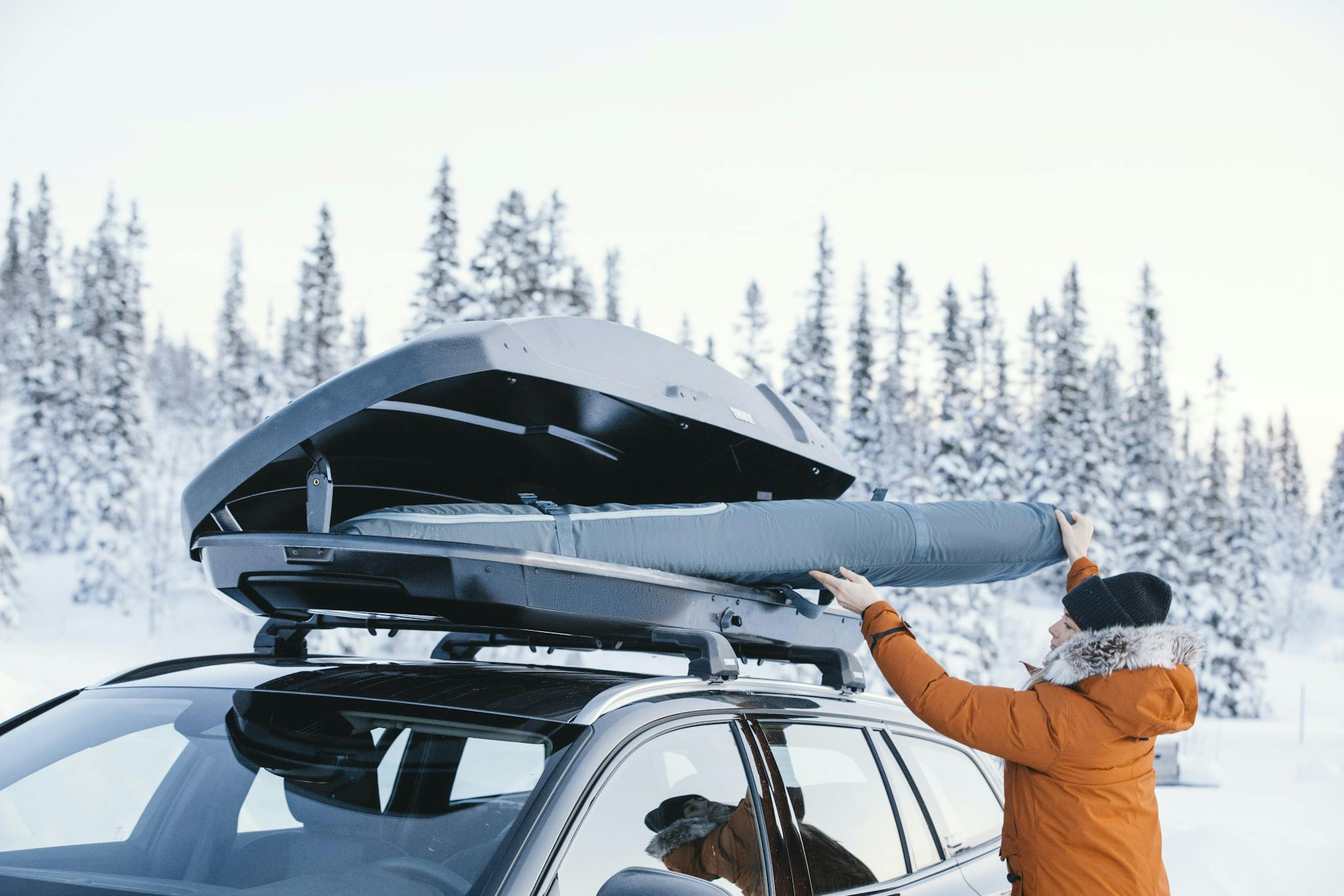Since 1991, America’s #1 Rack Specialty StoreAmerica's #1 Rack Store
Expert Phone SupportPrice Guarantee
Ski Carrier vs Cargo Box

Ski Carrier vs. Cargo Box
When you’re in the market for a rack of some sort to get your skis & boards safely to the mountain and back, you're often considering either a clamp-style ski attachment or an enclosed cargo box. These two styles of racks each have various advantages over the other and some important differences that are important to know to make the right choice for your needs and situation. Let’s dive into the details!

Clamp-Style Ski Rack
The clamp-style ski and snowboard carrier is often what first comes to mind when you are looking for a carrier to transport your gear. These carriers attach to almost any factory or aftermarket crossbar already fitted to your vehicle, and are probably the most common method you’ll see people using if you survey the mountain parking lot. These carriers come at a pretty reasonable cost, a quality carrier from a reputable brand can run you as little as $180 for a 6 ski or 4 board rack. These carriers are rated for capacity by the amount of equipment that can be loaded into them, for skis often ranging from 2-6 pairs, and for snowboards 2-4 boards. The actual load capacity of a carrier however can be largely dictated by the width of your equipment i.e if you have wider than average skis then you will be able to fit fewer pairs in the carrier. With the details out of the day, what are the pros and cons to the clamp style carriers?
Pros:
While there are many great things to be said about the clamp-style ski carriers, there are two main pros over a cargo box that come to mind for us. The first being the upfront cost, as previously mentioned a nice, wide capacity carrier can be had from a name brand, Thule for around the $180 price point. There are even other options from other reputable brands in lower capacities for less. This price point is hard to beat, with a good-quality cargo box likely running you $500 - $1000 depending on the model you choose. The second big pro for us is that there is basically zero learning curve to these carriers. They are incredibly easy to install, and operating them is as simple as unlocking the carrier, and depressing the button to open it. That's it, you're now good to load your equipment. Then simply close it and lock it once again, and hit the road!
Cons:
Getting into the cons, there are a few aspects of the clamp-style carriers that just can’t compete with the cargo box. The first being that your equipment is completely exposed to the elements while driving. This means that road salt, ice, and snow can make its way onto your skis and boards and work its way into the bindings. This is a big sticking point for some people, and in some cases is the sole reason they will go with a box over this style. Another thing to consider is what you will do with the rest of your gear. For snowboarders this may not be as much of an issue, but for a group of skiers hitting the mountain you have the poles. These with a clamp-style carrier will likely have to go into the car as the carrier will be full of skis. With a cargo box there is often plenty of room to slip the poles in as well.

Cargo Box
When choosing between these two styles, there are two main reasons I may suggest a customer purchase a cargo box over a clamp-style ski carrier if they’re torn between the two. The first I mentioned earlier regarding road debris and winter conditions affecting equipment being a large concern. The second being if they would be able to get use out of the box year round instead of just during the winter months. Cargo boxes provide quite a large value over a dedicated clamp style ski rack when utilized for other activities in the warmer months such as camping or road trips. I’ll dive into this in a bit more detail now with some pros and cons.
Pros:
As previously stated, a cargo box is going to provide far better protection for the contents you may be transporting within it, whether that’s winter sports equipment or bags while on a road trip. The contents are hidden from view and safely locked inside the box. While none of the companies producing these boxes rate them as water tight, in most cases they are except in windy, rainy conditions or really hard rain while traveling. Cargo boxes can be great for all sorts of activities outside of the winter, they are great for adding extra cargo space to compact vehicles for everyday use or road trips. Many of our customers find many uses for them outside of the typical marketing material such as transporting dog crates for their business or potentially smelly gym bags or MTB gear that they don’t want to stink up their vehicle.
Cons:
Getting into the cons of the cargo box, the first glaring issue for some folks can be storage. Not everyone has a large garage or basement to store an awkwardly shaped cargo box. There are some great systems for storing boxes if you have one of these areas. If you live in an apartment building it's likely that the way you store your cargo box is by leaving it on the roof of your vehicle at all times. This can be an issue obviously if you want to use your roof rack for other activities as well. Another downside that can apply to some vehicles is clearance issues with parking structures. Cargo boxes come in all shapes and sizes, and the taller models when paired with an SUV can sometimes render you unable to park in garages. Whether that be in your garage at home, apartment building, hotels, or public parking garages. It’s certainly something to consider when purchasing.
America’s #1 Automotive Rack Store
info@rackwarehouse.com
1-800-272-5362